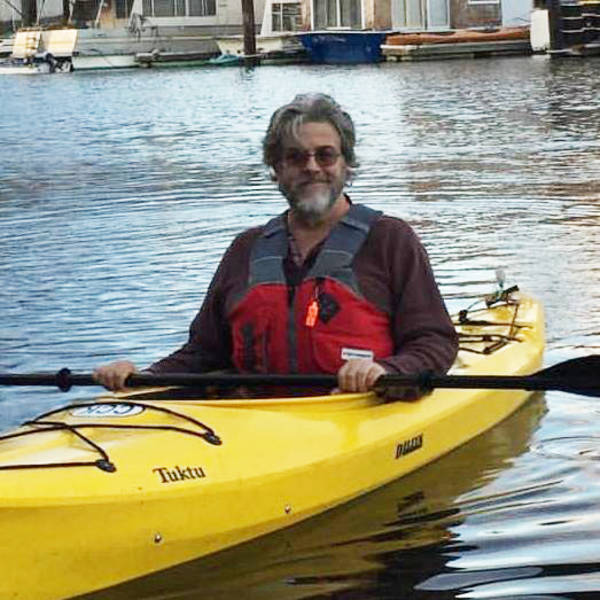On the 25th anniversary of the California Desert Protection Act, we share a selection of the many extraordinary places that advocates have saved through years of dedication.
These places and the park sites they are part of are now preserved within the largest intact ecosystem in the Lower 48, thanks to decades of persistence by desert advocates.
1. The Wonderland of Rocks, Joshua Tree National Park
This popular park is best known for its namesake yucca plant, but its landscape is dominated by enormous, intricately shaped granite rock formations. The Wonderland of Rocks is an easily accessible area of the park where visitors can hike through many jaw-dropping boulders. Rock climbers will also find hundreds of routes to explore.
2. Bonanza Spring, Mojave Trails National Monument
Tucked in a remote canyon of the park, this rare spring-fed oasis has served as a reliable water source for people and wildlife for centuries. It is the largest water source in over 1,000 square miles and highly significant to area tribes. The spring is threatened by a large corporate water-mining proposal that NPCA and our allies have been fighting for years. The state of California recently passed legislation that would require environmental reviews of the project, effectively stopping it in its tracks.
3. Kelso Dunes, Mojave National Preserve
This striking dune field covers 45 square miles, making it the largest in the Mojave Desert, and is easily accessible via a 3-mile round-trip trail. One of the remarkable features of these dunes is that they “sing.” When the sands are dry enough, visitors can cause tiny avalanches and create a “booming” sound as they cascade downhill.
4. Badwater Basin, Death Valley National Park
This vast, barren salt flat formed through seismic shifts in the earth’s crust and features the point with the lowest elevation in North America, 282 feet below sea level. The rapidly evaporating water that collects in the basin leaves behind eerie geometric shapes, and the spot gets its name from a local spring-fed pool, which may seem appealing to drink from, but is five times saltier than the ocean.
5. Prehistoric rock art and rare grasses, Castle Mountains National Monument
Castle Mountains holds great importance for desert Native peoples, who have lived in the region for millennia. Prehistoric rock art and archaeological sites are found throughout the area, especially near traditional trade routes. The park also features a unique assemblage of native grasses — 28 varieties in total, including many rare species. The California Native Plant Society describes the site as a “treasure trove of plant diversity.”
6. San Gorgonio Mountain, Sand to Snow National Monument
This national monument gets its name from the area’s extreme elevation change — from the sand of the Sonoran Desert to the peak of San Gorgonio Mountain, a difference of about 10,000 feet. This peak is part of the San Bernardino Mountains and is the highest in Southern California and a significant landmark in the region.
7. The largest Joshua tree forest in the world, Mojave National Preserve
This beloved tree can be found at many parks in Southern California, including, of course, Joshua Tree National Park. But the Cima Dome region of Mojave National Preserve contains a significant portion of the largest Joshua tree forest in the world. The dome is a 20-mile-wide hill with a gentle slope that provides an ideal site for the trees, which are a revered part of desert culture. The U.S. Fish and Wildlife Service just designated these Joshua trees as a new species this past August, distinct from those in Joshua Tree National Park. Botanists are still arguing over the issue.
8. Scotty’s Castle, Death Valley National Park
The story of this lavish 1930s-era villa began with an unlikely friendship. Prospector Walter Scott attempted to con a wealthy Chicago financier, Albert Mussey Johnson, into investing in a fraudulent gold mine. Although he was initially furious when he discovered the scheme, Johnson was so charmed by Scott’s colorful character, the men ended up becoming close friends and collaborating on the construction of Johnson’s winter home, which he named after Scott. The site has been closed after incurring severe flood damage in 2015 and is a prime example of the need for reliable funding to address the more than $11 billion National Park Service maintenance backlog.
9. Cholla Cactus Garden, Joshua Tree National Park
A quarter-mile-long trail near the intersection of the upper Mojave Desert and lower Colorado Desert takes visitors through a high concentration of cholla — shrubby cacti with protruding “arms” that flower in the early spring. The garden is less crowded than some of the better-known attractions at the park and in a more remote area with darker night skies.
10. Amboy Crater, Mojave Trails National Monument
This distinctive volcanic formation is one of the best examples of a cinder cone in the Mojave Desert and features some of the youngest rocks in the Lower 48. It rises 246 feet above its surrounding lava field, and though the site is just off Route 66, approaching the crater can feel like entering a prehistoric era. Visitors can hike directly into the crater, though they should use caution due to the extreme heat and lack of shade.
Note: Mojave Trails National Monument is managed by the Bureau of Land Management and Sand to Snow National Monument is jointly managed by the Bureau of Land Management and the U.S. Forest Service. The other sites in this story are national park sites managed by the National Park Service. All six sites together are part of one of the largest desert conservation reserves in the world.
Stay On Top of News
Our email newsletter shares the latest on parks.
About the author
-
 Chris Clarke Former Ruth Hammett Associate Director, California Desert Program
Chris Clarke Former Ruth Hammett Associate Director, California Desert ProgramChris was with NPCA from 2017 to 2023. He worked with desert communities to protect national parks, monuments, and other protected places, and the landscapes that surround them.


